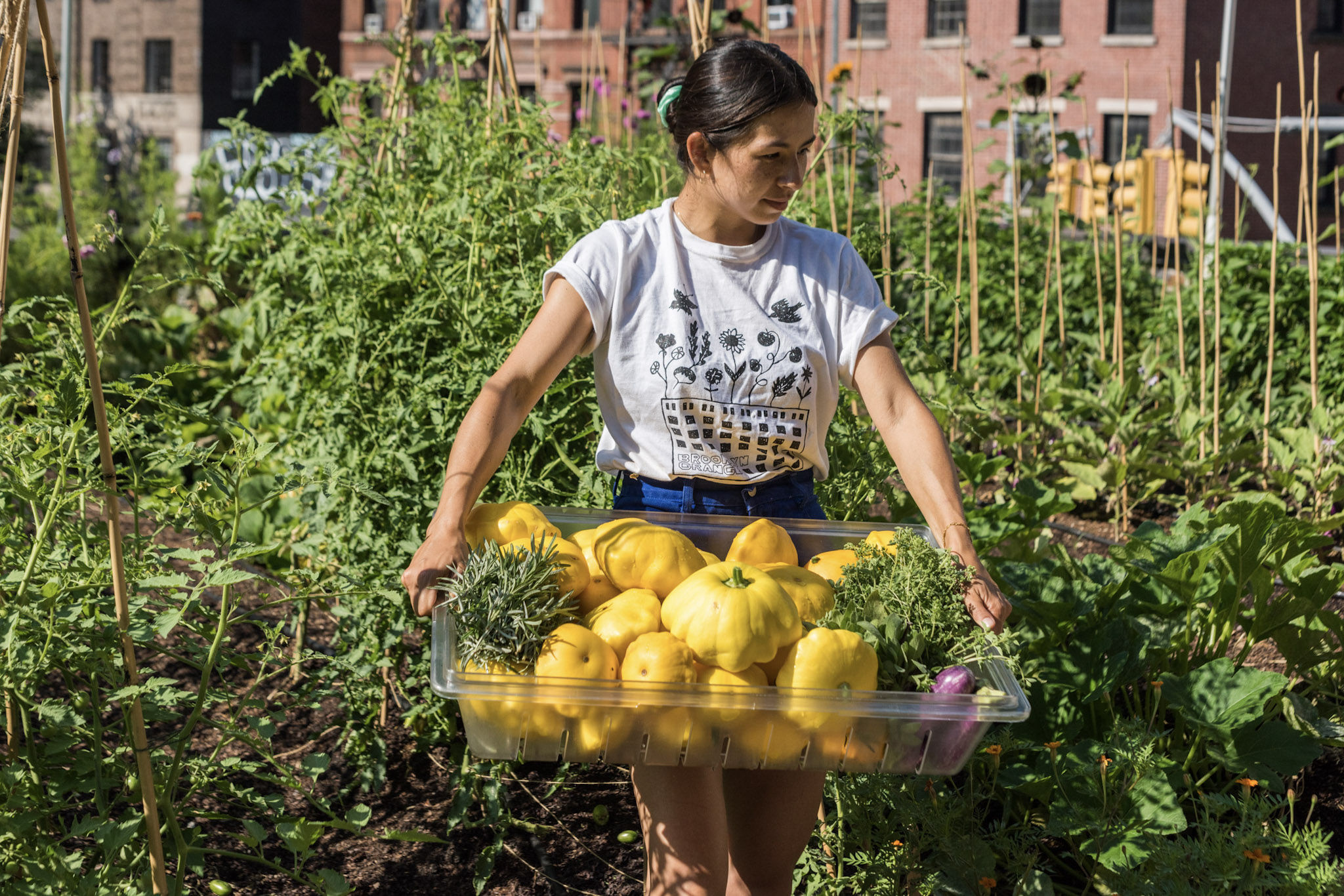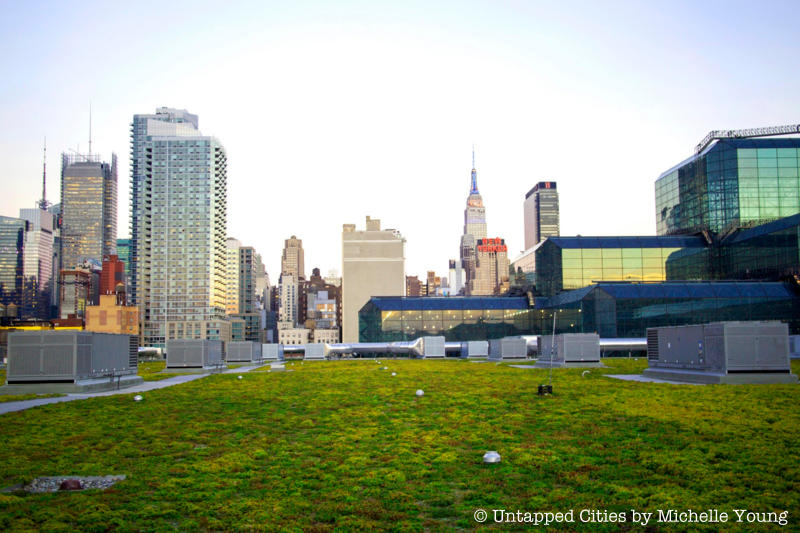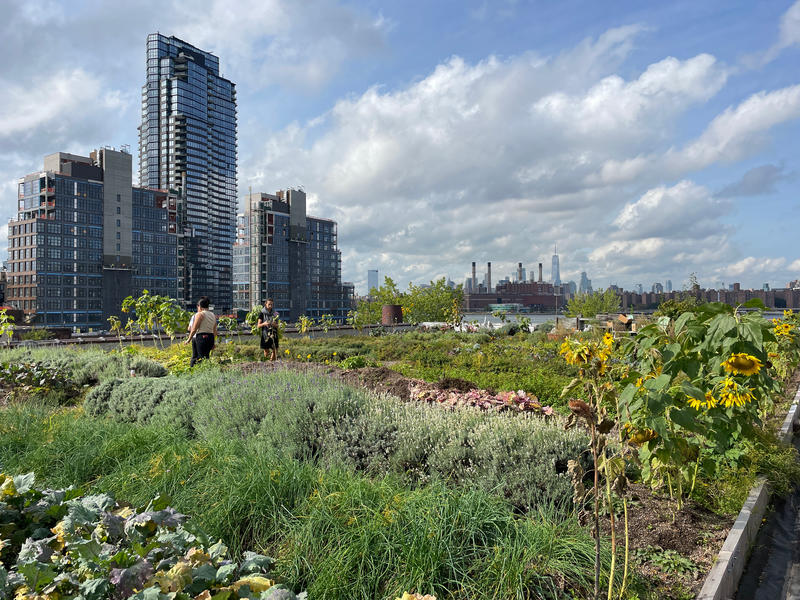See the History of Ticker-Tape Parades Beneath Your Feet on Broadway’s Canyon of Heroes
Uncover the history of NYC's confetti-covered parades that have been running since the 1880s!

Here are 5 NYC rooftops that are turning the city’s skyline green, installing sustainability into the city’s infrastructure.

New York City buildings boast over 1.6 billion square feet of rooftop space, an amount of space that is roughly the size of Boston. Buildings account for over two-thirds of the city’s total emissions. More and more, developers and owners are looking to the sky for solutions to counter emissions and are converting rooftop spaces into green havens.
Green roofs have multiple benefits. Not only do they leverage lower energy bills, but they also help to cut carbon emissions, create habitats for local wildlife species, and manage stormwater. The proliferation of green roofs and increased green spaces in urban settings help curb the urban heat island effect. The urban heat island effect occurs when an urban area has a higher temperature than the surrounding areas. This is due to the heat re-emitted into the atmosphere by all of the buildings, roads, and infrastructure. Green rooftops make the city’s infrastructure more sustainable, strengthen urban agriculture, and empowering the process of carbon capture from the concrete jungle below. Here are five rooftops that are recoloring the city’s skyline green.

Homemade pasta dishes feature ingredients grown just steps from patron’s plates at Rosemary’s, an Italian restaurant tucked away in the West Village. A lush 1,000-square-foot rooftop garden flourishes here, despite constraints on space in the densest metropolis. At this establishment founded in 2012 by Carlos Suarez, the seasonal menu reflects a rotating selection of produce that can survive life in the city. This ever-changing supply of ingredients encourages Executive Chef Wade Moises and Rosemary’s staff to experiment constantly in the garden. Restaurant guests are welcome to roam the sprouting beds of fresh herbs and vegetables and enjoy the greenery that animates their gastronomic experience.

One of the most extensive green rooftops in the United States rests next to Hudson Yards and within earshot of the Port Authority Bus Terminal. With 8-acres of rooftop, the Jacob K. Javits Convention Center successfully repurposed an otherwise inhospitable environment to create a 6.75-acre wildlife sanctuary, a 1-acre farm managed by the Brooklyn Grange, and a home for nine honeybee hives. The center engages with NYC Audubon, a grassroots community that works to conserve and protect birds and their habitats in New York City. The group studies the diverse populations of birds, bats, and insects that benefit from the green roof’s food supply. The farm grows up to 50 crops each season which are used at the center’s farm-to-table events. This space is a true example of the positive environmental trade-offs that green rooftops offer. The green roof mitigates around 7 million gallons of stormwater runoff annually and cools the area by about 1.9 degrees Fahrenheit, reducing the urban heat island effect.

This West Village hidden gem operates similliarly to neighboring farm-to-table concepts but trades soil for air. Bell Book & Candles’ sophisticated menu complements the revolutionary vertical rooftop garden that grows up into the air using aeroponics-plant cultivation. This model is very efficient in terms of energy consumption and nutrient usage. This vertical vegetable growth concept supports the resturant’s commitment to sustainability and responsible procurement.

Gotham Green is a pioneer in reimagining where and how food can be grown. Their largest New York City facility in Jaimaica, Queens is located atop the historic Ideal Toy Company factory. This site was renowned for producing the iconic Teddy Bear and Rubik’s Cube. The rooftop of Gotham Green spans 60,000 square feet. Greenhouses that cover the space yield leafy, fresh greens, numbered in the millions. Gotham Greens delivers nutritious, sustainably grown greens year-round to the New York Tri-State area. They are revolutionizing the market and practices for urban-grown food that minimizes our overall environmental footprint. Gotham Greens has locations in Queens, Greenpoint and Gowanus, Brooklyn, and more cities across the United States.

The city’s oldest agribusiness sits three stories above the concrete jungle in Greenpoint, Brooklyn. Eagle Street Farm is a 6,000-square-foot organic farm winking at the Manhattan skyline. A variety of seasonal produce grows here depending on the weather and time of year. The farm is open to the public and many local chefs bring the rooftops’ greenery to your plate. Ealge Street Farm’s mission calls for sustainable and resilient growing processes, like the farm’s stormwater runoff storge practices. This alternative process cools the warehouse below. Furthermore, Eagle Street Farm uses environmentally conscious design practices that repurpose materials, like old rafters used as edging.
New York City rooftops transform the city’s palette, cultivate urban ecosystems that feed New Yorkers and support local wildlife species. More and more buildings are looking up, integrating sustainable building designs with alternate rooftop functions. Where there could be gray, green rooftops are repainting the New York City metropolis skyline.
Subscribe to our newsletter